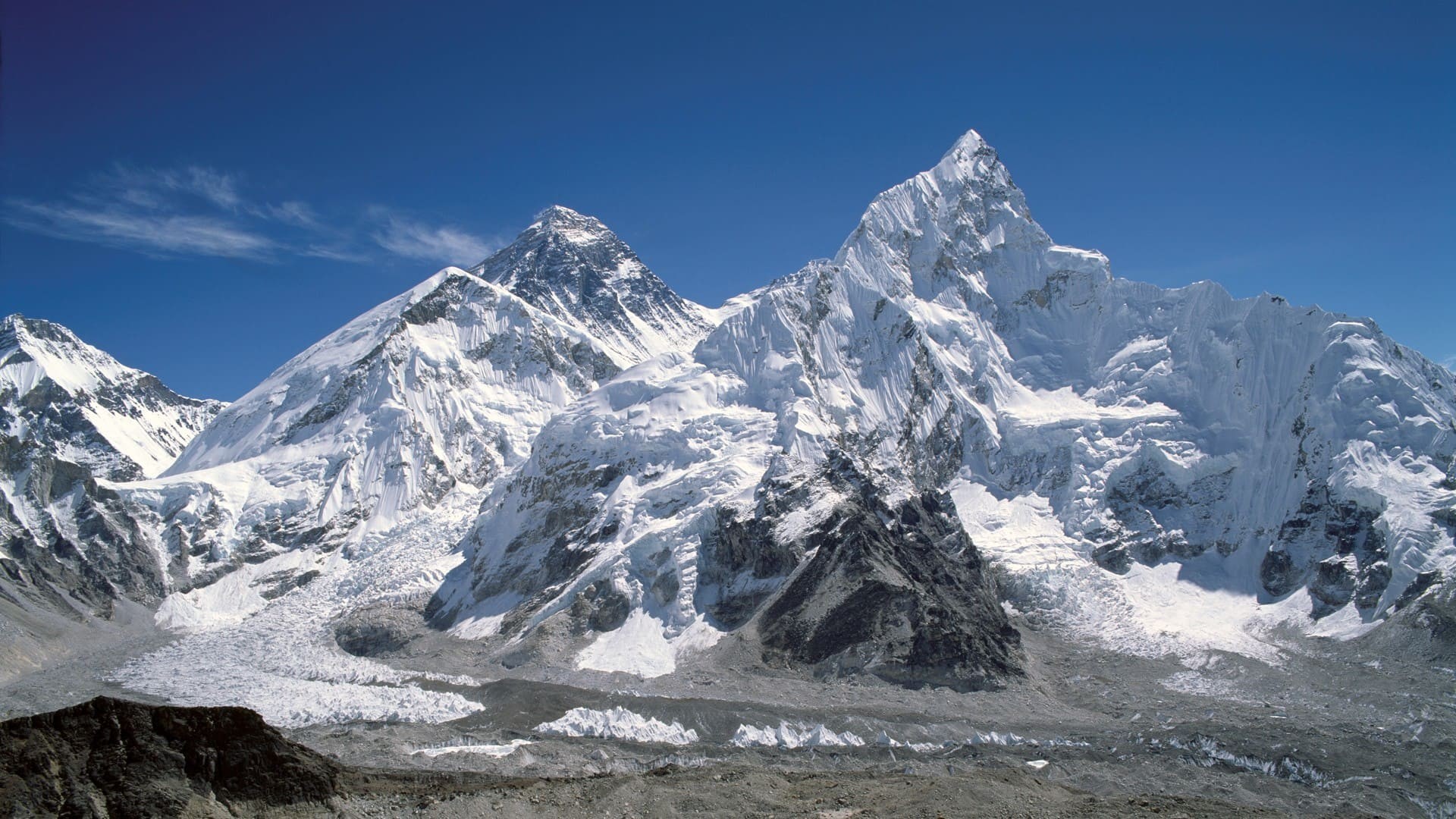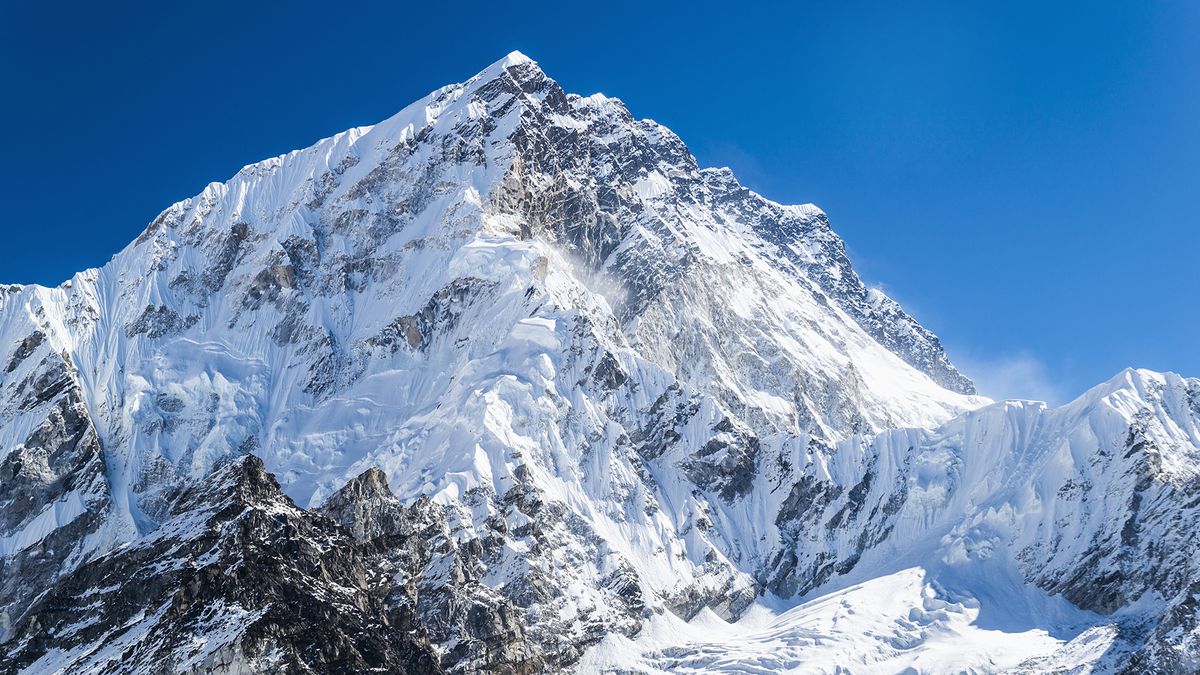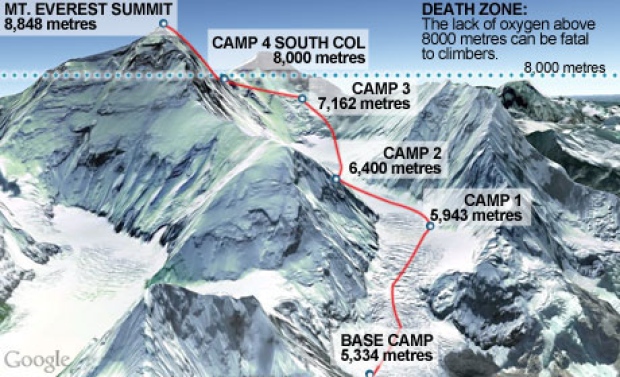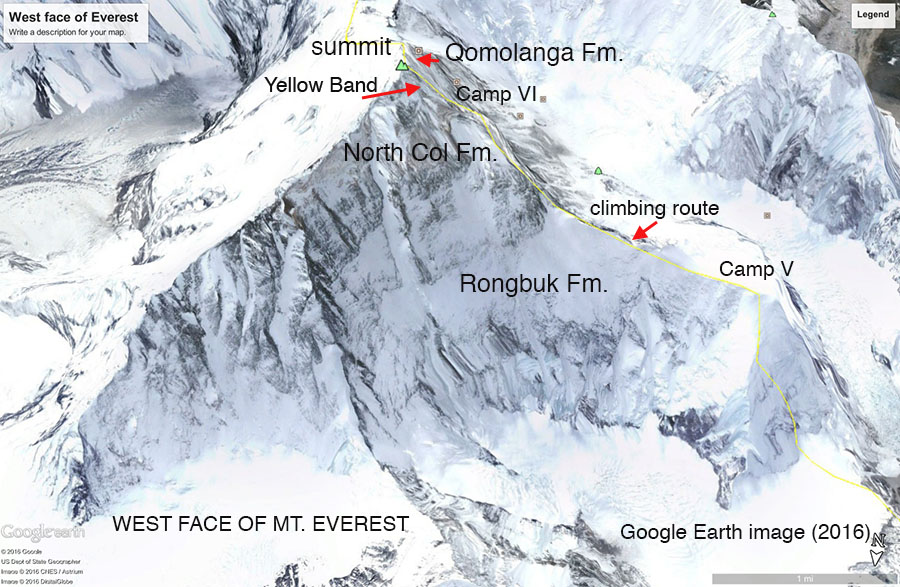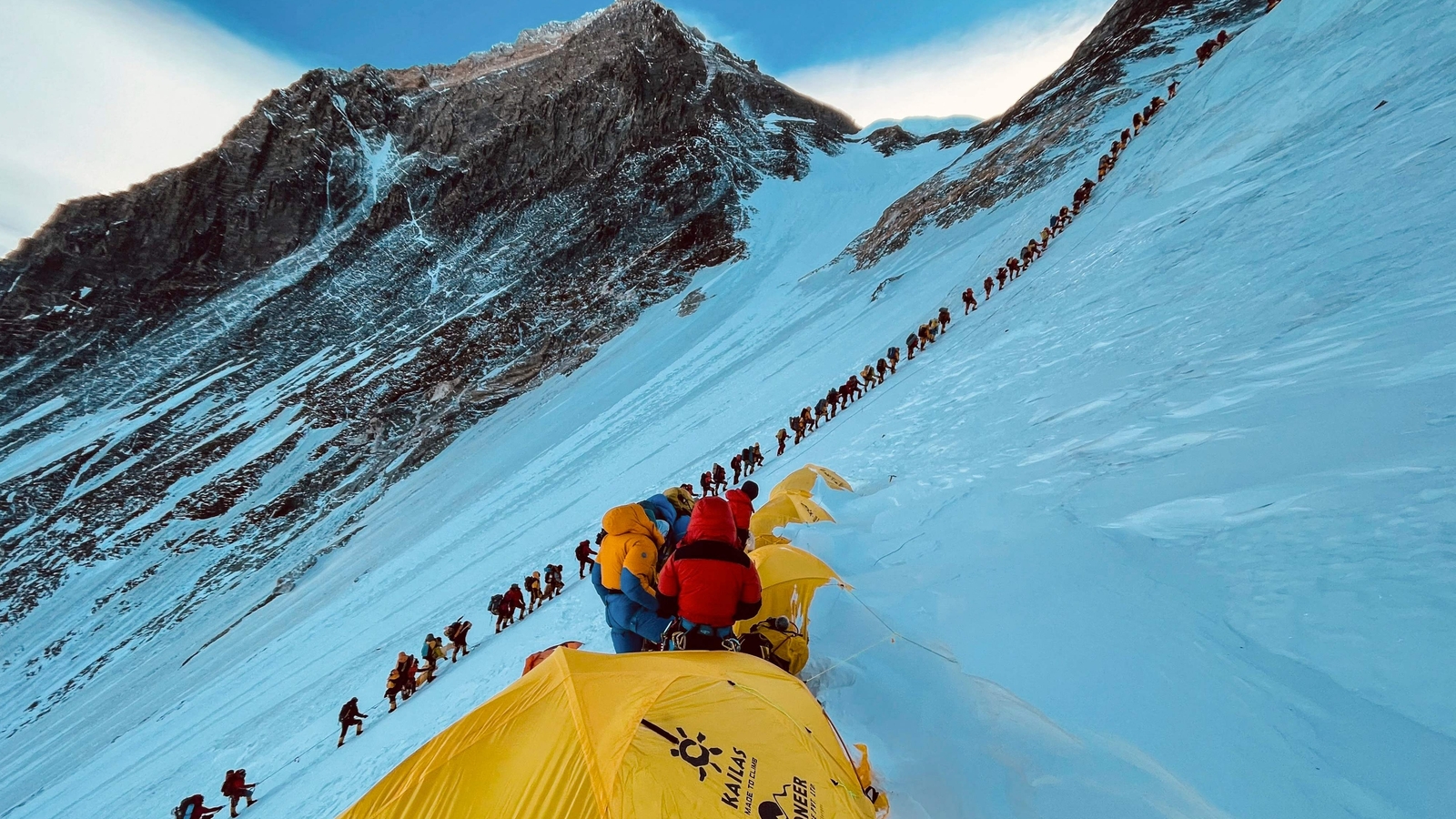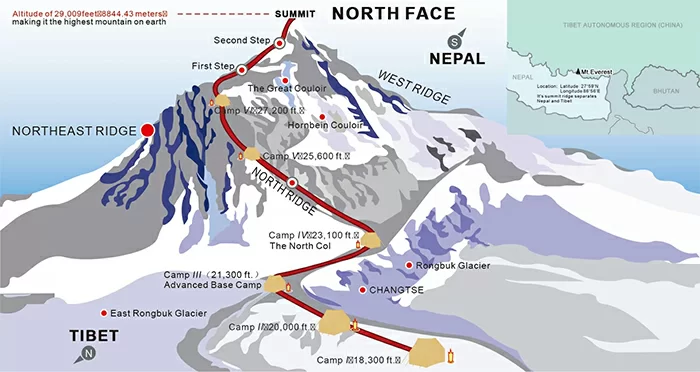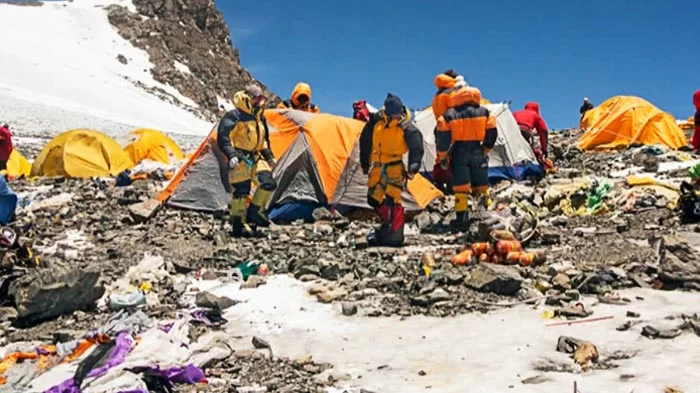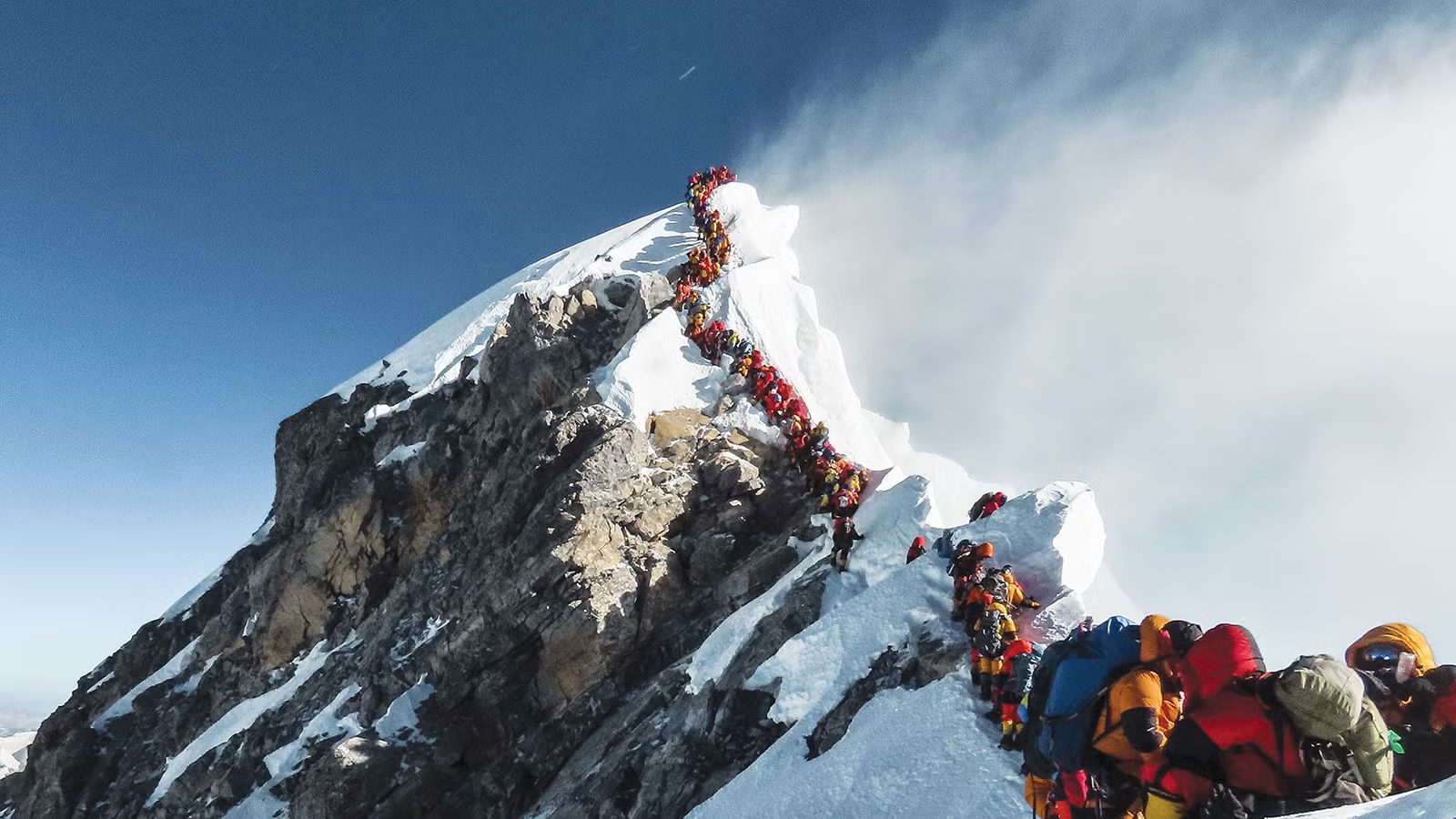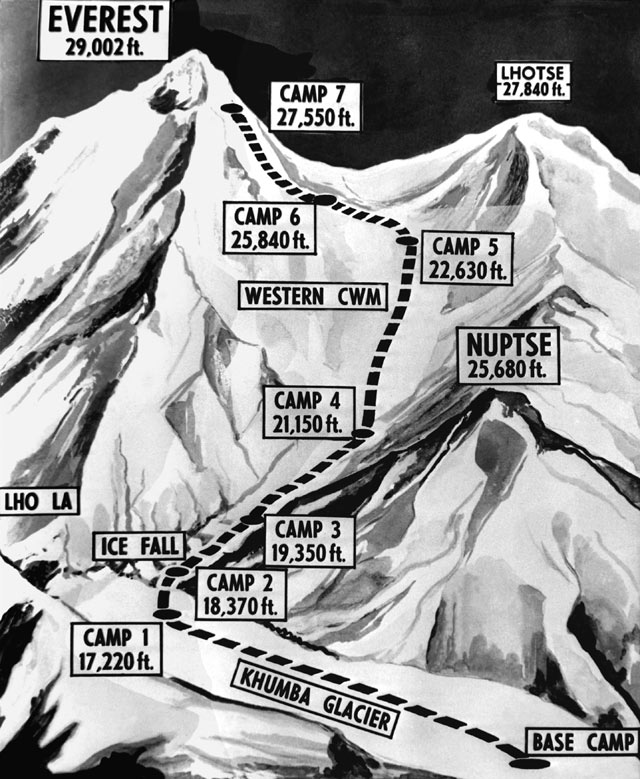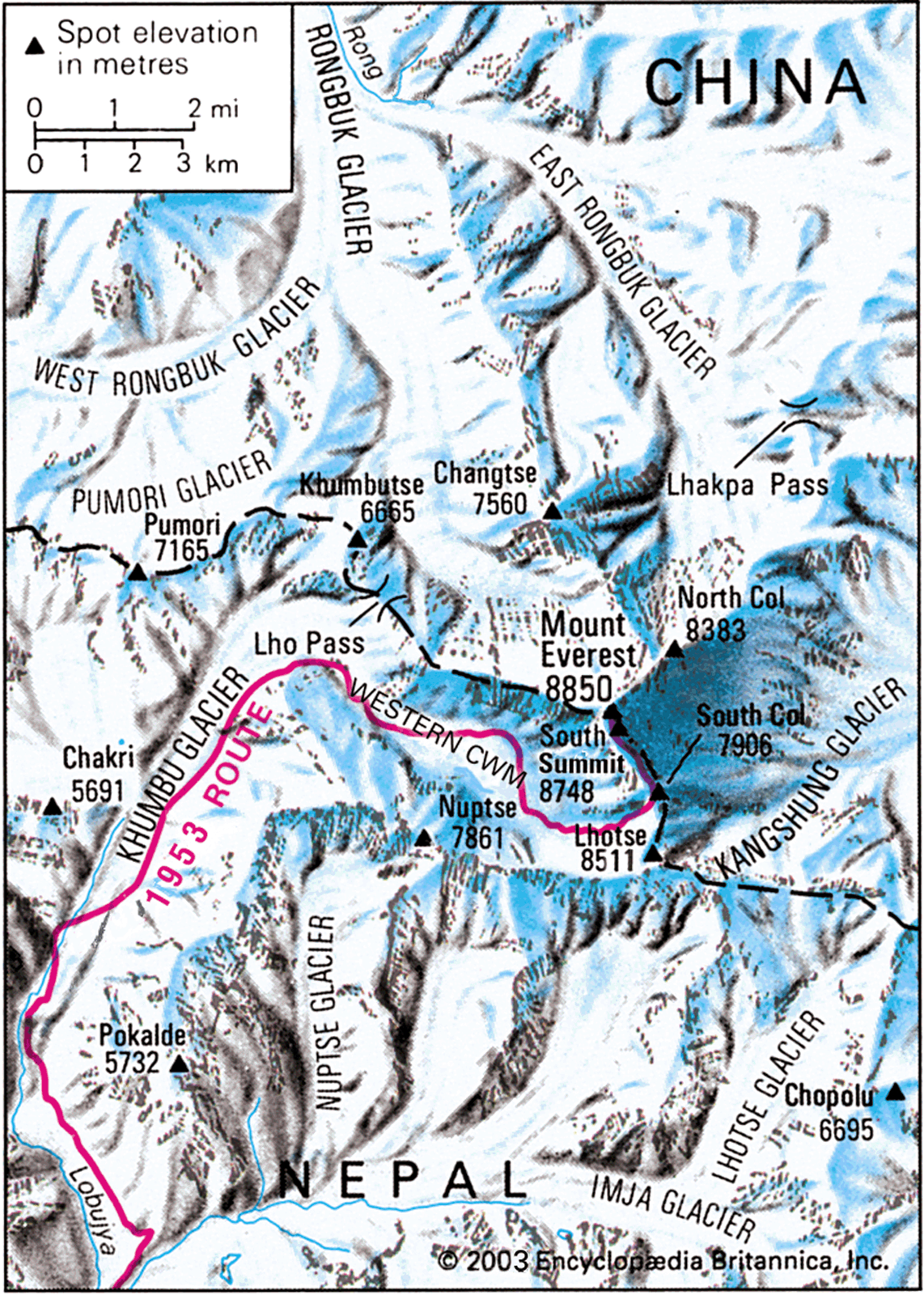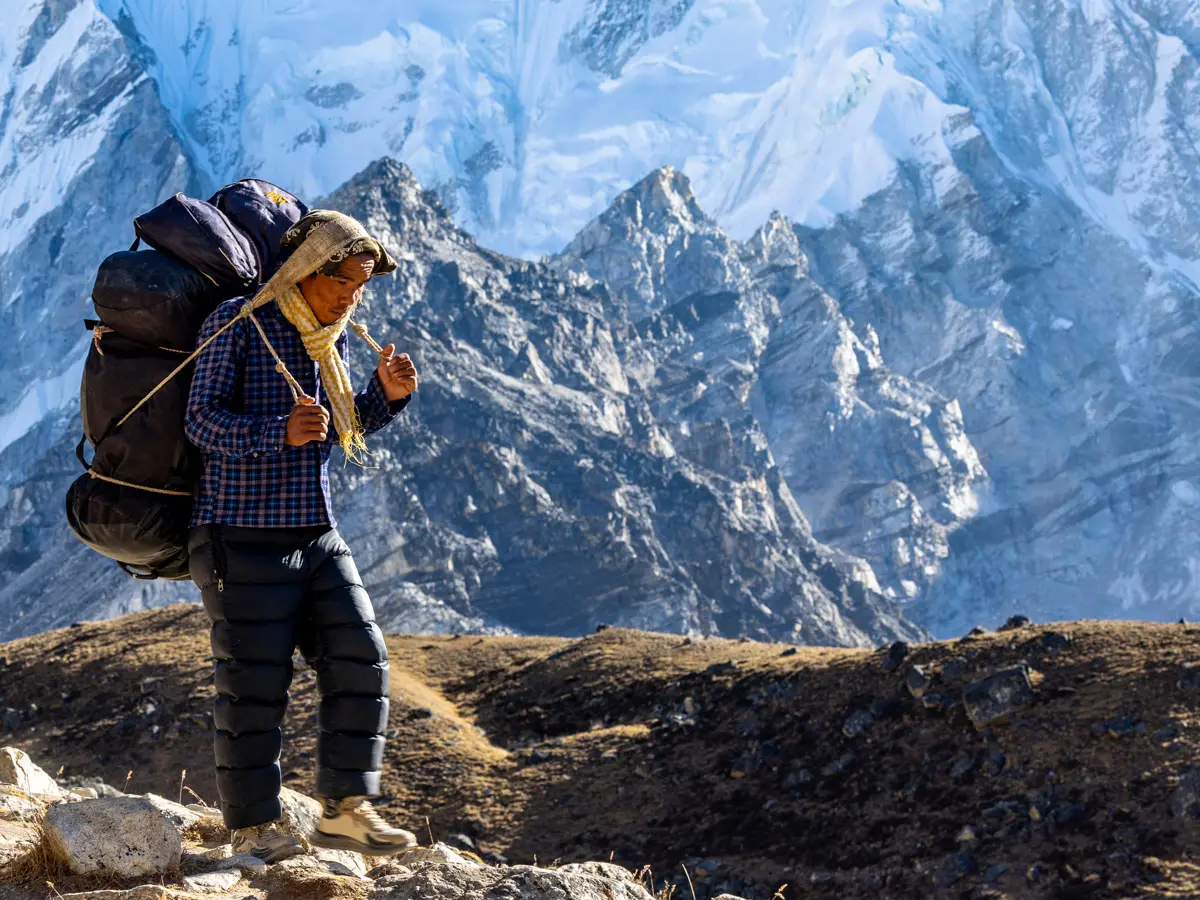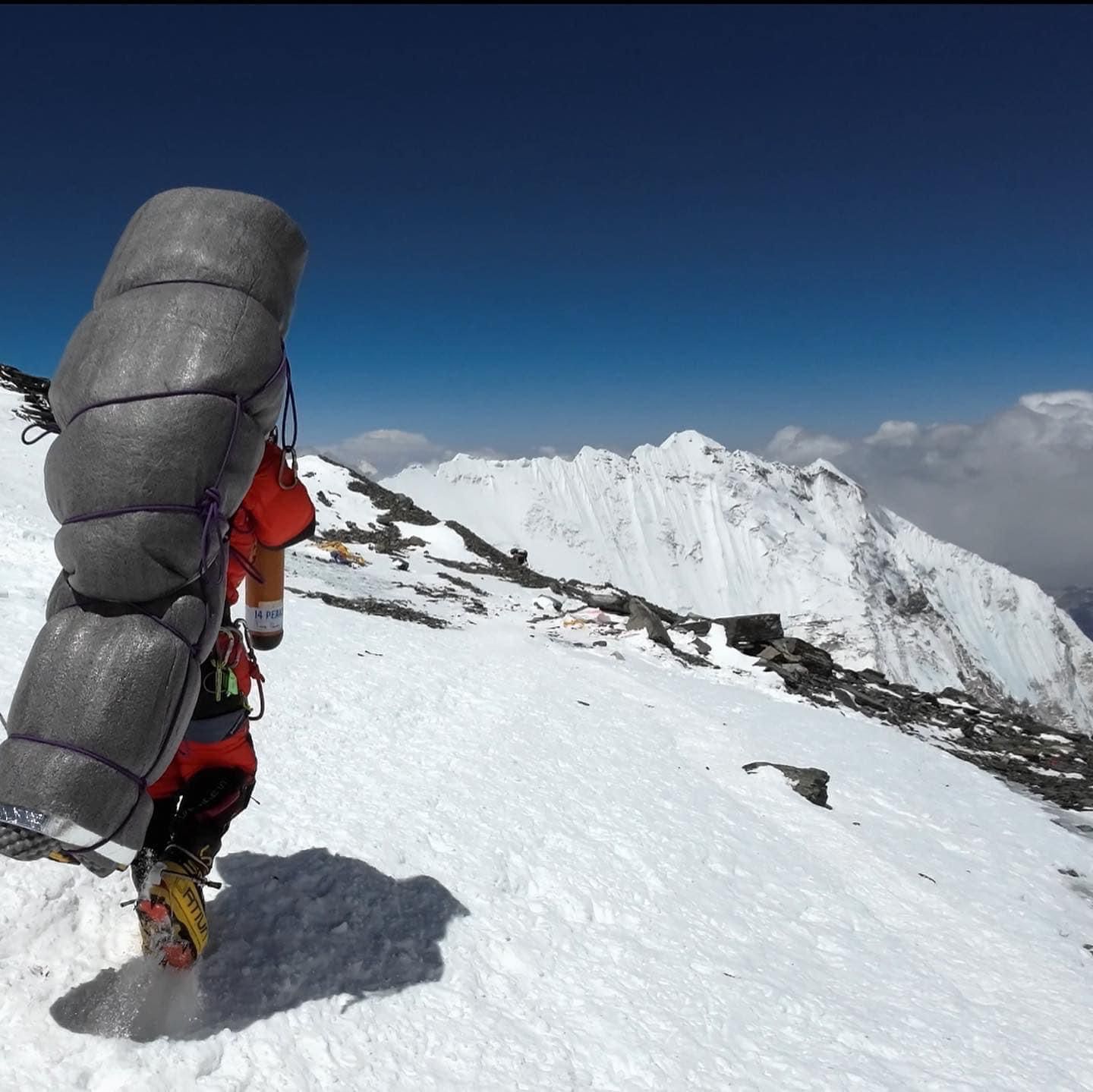General Information(Mount Everest)
-
Name: Mount Everest
-
Local Names:
-
Nepali: सगरमाथा (Sagarmāthā) – “Forehead of the Sky”
-
Tibetan: ཇོ་མོ་གླང་མ (Chomolungma) – “Goddess Mother of the World”
-
-
Height:
-
8,848.86 meters (29,031.7 feet) – as officially recognized by China and Nepal (2020 joint survey).
-
-
Coordinates:
-
27.9881° N, 86.9250° E
-
-
Location:
-
Border of Nepal (Province No. 1) and Tibet Autonomous Region, China
-
Geological Information(Mount Everest)
-
Mountain Range: Himalayas (Mahalangur Himal sub-range)
-
Formation:
-
Formed when the Indian and Eurasian tectonic plates collided around 50–60 million years ago, this monumental event significantly shaped the region’s geography. Consequently, the collision ultimately led to the formation of the towering peaks of the Himalayas, including Mount Everest.
-
-
Composition:
-
Tectonic processes have gradually shaped the rocks of Mount Everest, which are primarily composed of metamorphic and sedimentary types, including marble, shale, and marine limestone. Consequently, the mountain’s composition provides invaluable insights into the region’s geological history, highlighting how these processes have influenced the landscape over millions of years.
-
Climbing History(Mount Everest)
-
First Survey:
-
The Great Trigonometrical Survey of Britain, conducted in 1856, initially referred to Everest as “Peak XV.” However, over time, the mountain’s name was changed to honor Sir George Everest, the surveyor general of India.
-
-
Named After:
-
The British Surveyor General of India was Sir George Everest.
-
-
First Successful Ascent:
-
Tenzing Norgay (Nepal) and Sir Edmund Hillary (New Zealand) successfully reached the summit on May 29, 1953, marking a historic achievement in mountaineering.
-
-
Standard Routes:
-
South Col Route (Nepal side)
-
North Ridge Route (Tibet side)
-
Climbing Details
-
Typical Climbing Season:
-
Pre-monsoon (April–May) and post-monsoon (September–October)
-
-
Base Camps:
-
South Base Camp: Nepal, ~5,364 m (17,598 ft)
-
North Base Camp: Tibet, ~5,150 m (16,900 ft)
-
-
Permit Costs:
-
Nepal: ~$11,000 for foreigners (plus expedition costs)
-
-
Challenges:
-
avalanches, icefalls (especially Khumbu Icefall), packed roads, altitude sickness, intense cold, and erratic weather.
-
Deaths and Dangers
-
Deaths:
-
As of 2024, more than 330 people have died. The most frequent causes of death include avalanches, falls, exposure, and altitude sickness, which continue to pose significant risks to climbers.
-
-
Notable Death Zone:
-
Climbing over 8,000 meters, where there is not enough oxygen to support life for extended periods of time, poses a major challenge for climbers. As a result, the risk of altitude sickness increases significantly at such extreme elevations.
-
Tourism and Environmental Impact
-
Popular Destination:
-
For both climbers and tourists (Everest Base Camp trip).
-
-
Environmental Concerns:
-
As a result of increased travel and adventures, issues such as waste buildup, trouble recovering bodies, and ecological deterioration have become more prominent. Consequently, these challenges have raised concerns about the environmental impact of climbing on Everest.
-
-
Conservation Efforts:
-
In response to these challenges, strict permission requirements and cleanup efforts have been initiated by the Nepalese government and non-governmental organizations. As a result, these measures aim to address waste buildup, trouble recovering bodies, and ecological deterioration caused by increased travel and adventures.
-
Records and Notable Climbs
-
Most Ascents:
-
Kami Rita Sherpa (Nepal) – 28 ascents (as of 2023).
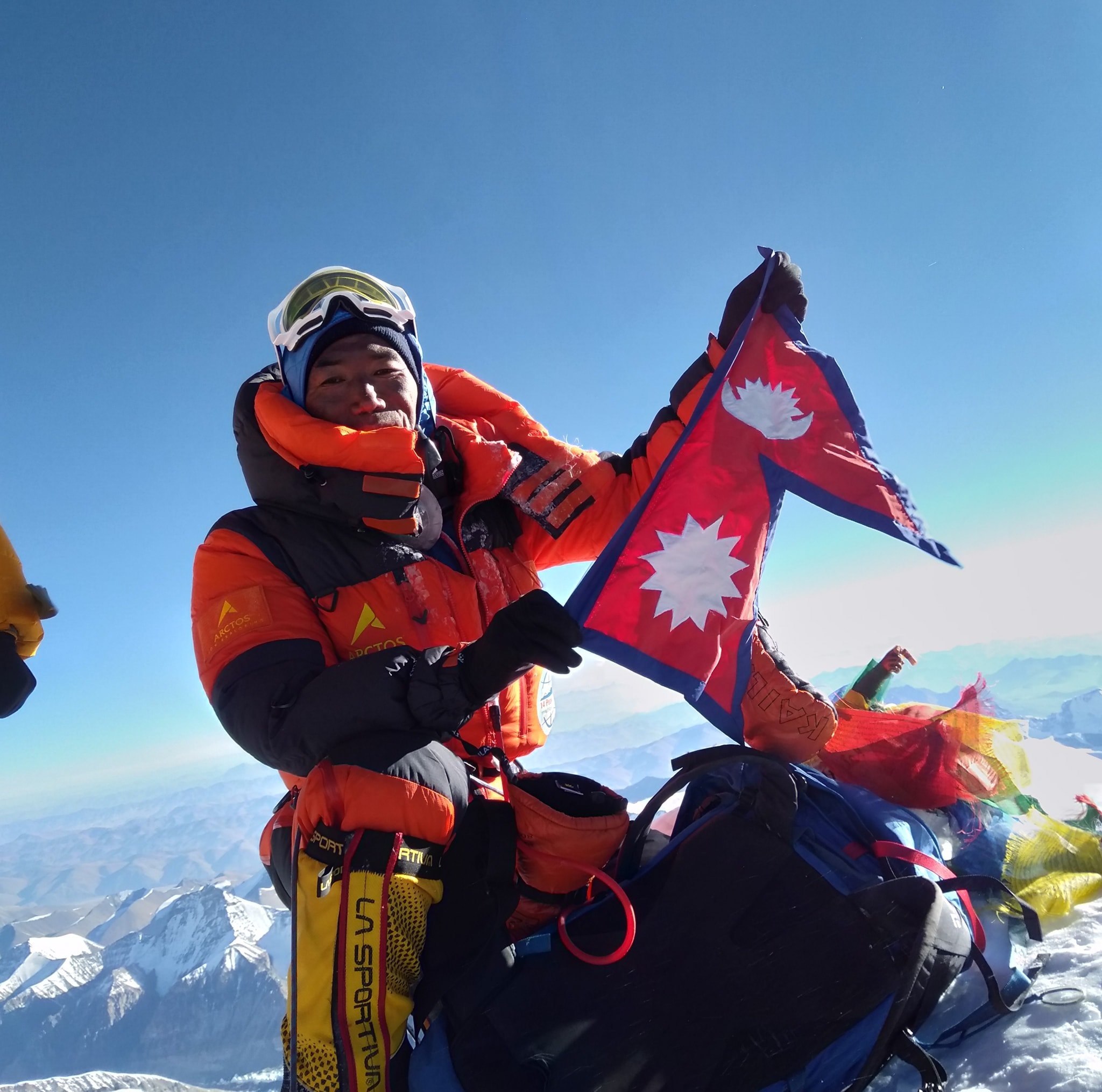
-
-
Youngest Climber:
-
Jordan Romero (USA), aged 13 (via the north side in 2010).
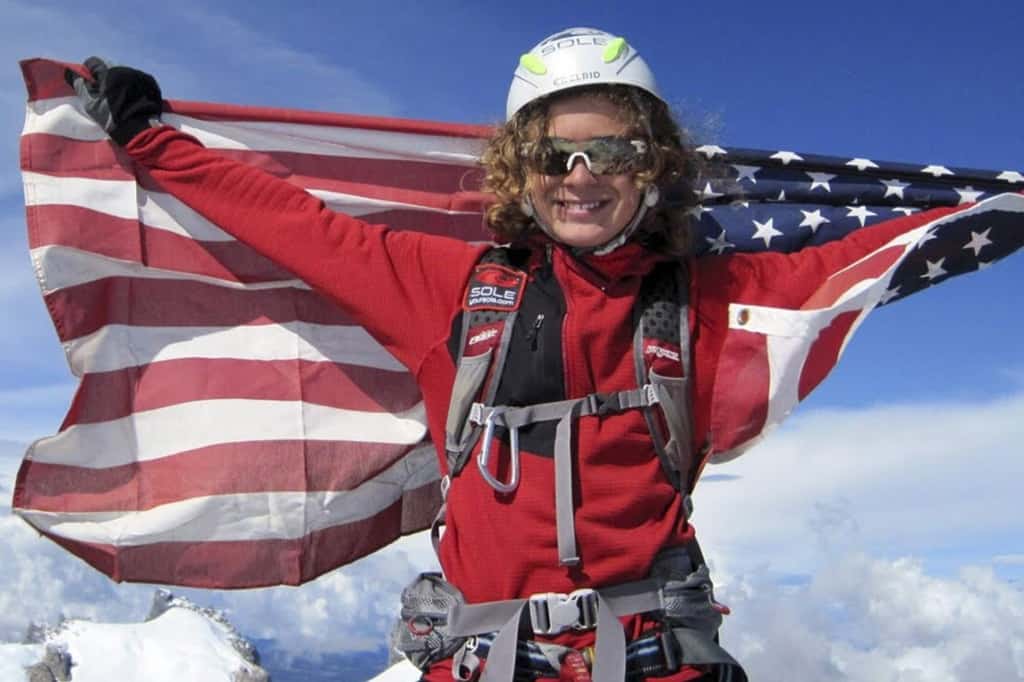
-
-
Oldest Climber:
-
Yuichiro Miura (Japan), aged 80 (in 2013).
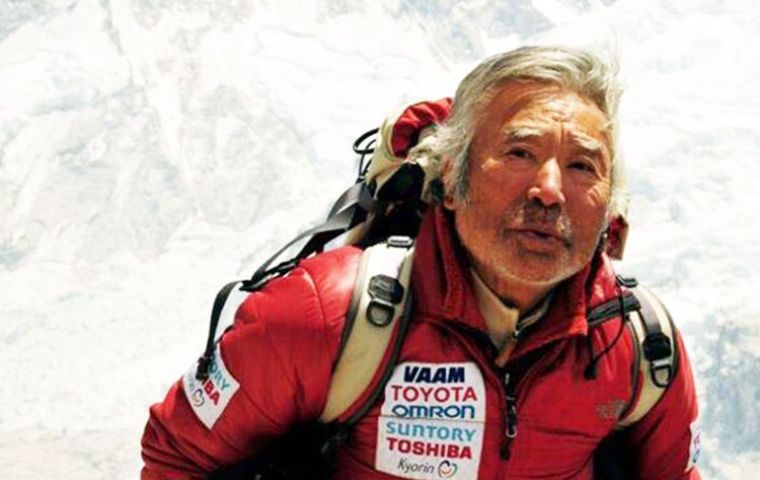
-
-
Fastest Ascent:
-
Lhakpa Gelu Sherpa – 10 hours 56 minutes (2003)
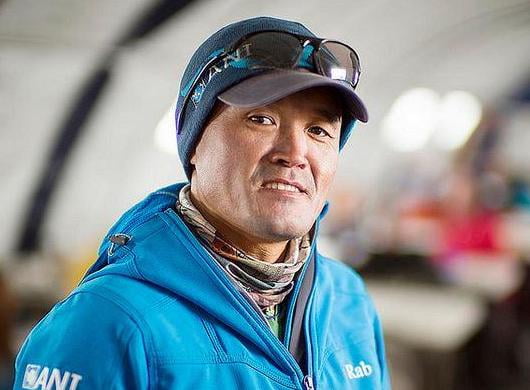
-
🗺️ Mount Everest Climbing Routes
Mount Everest offers several routes to its summit, with the two most frequented being:
1. South Col Route (Nepal Side)
-
Base Camp:
Located at approximately 5,364 meters (17,598 feet), the site offers a unique vantage point. Moreover, this elevation presents both breathtaking views and significant challenges for climbers.
-
Summit: 8,848.86 meters (29,031.7 feet)
2. North Ridge Route (Tibet Side)
-
Base Camp: About 5,150 meters (16,900 ft) above sea level
-
Key Landmarks:
-
Rongbuk Glacier: The place of departure for the Advanced Base Camp
-
North Col: At around 7,000 meters (22,966 ft), a ridge
-
Three Steps: High-altitude rocky outcrops that provide substantial obstacles
-
-
Summit: 8,848.86 meters (29,031.7 feet).
-
-
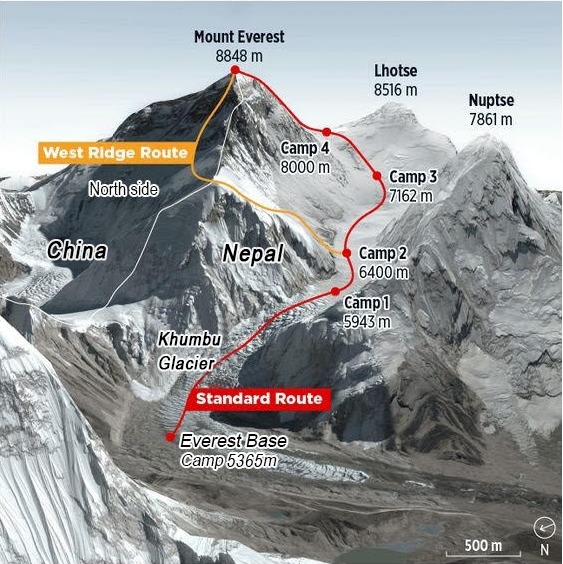
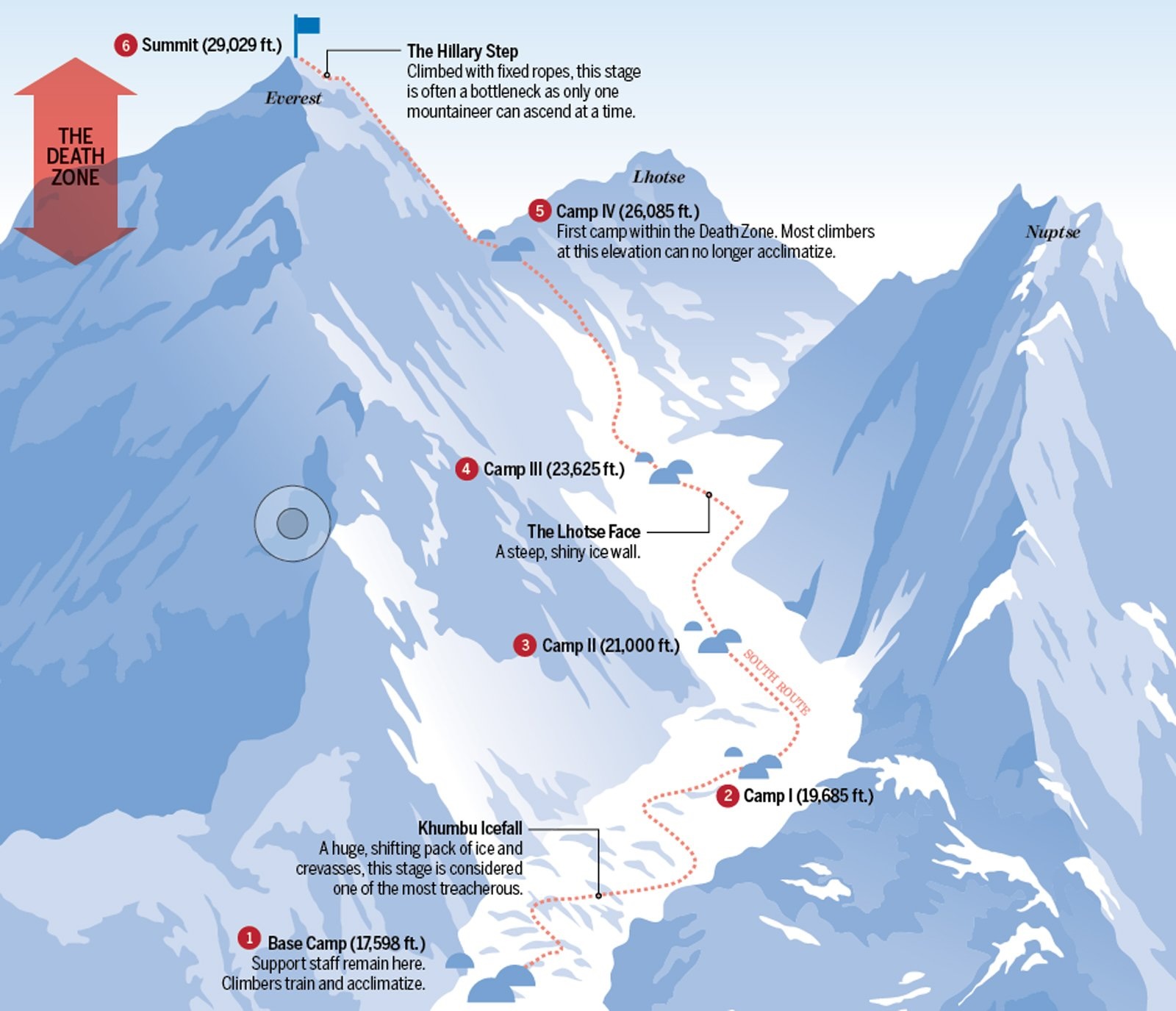
🧗♂️ Historical Timeline of Mount Everest Expeditions
Here’s a chronological overview of notable expeditions and milestones:
-
In 1924, Andrew Irvine and George Mallory vanish on Everest; however, Mallory’s body is found in 1999. Then, in 1953, Tenzing Norgay and Edmund Hillary reach the first recognized summit. Subsequently, Junko Tabei becomes the first female climber in 1975, followed by Bachendri Pal in 1984.
Moving into the 2000s, a rise in summit attempts occurs, largely due to technological advancements and greater commercialization.
- 2014:
In 2014, 16 Sherpas are killed in an avalanche in the Khumbu Icefall, which subsequently sparks debates over worker safety and working conditions.
-
In 2020, climbing permits were suspended and excursions were temporarily halted due to the COVID-19 outbreak. However, in 2021, despite ongoing pandemic challenges, more than 500 climbers reached the peak as climbing resumed under new health regulations.
🧗♂️ 1. Evolution of Climbing Gear
Equipment has changed significantly throughout the years, and climbing Mount Everest has always been a technological challenge: over time, innovations like better insulation, lighter packs, and synthetic fabrics have improved gear. Additionally, more dependable oxygen systems and advanced communication devices have enhanced safety and efficiency.
1950s–1970s (Pioneer Era)
-
In the early days, equipment included steel crampons, canvas tents, and wool gear. At the time, oxygen systems used large and ineffective tanks. As for footwear, climbers relied on thick leather boots with felt linings inside. For navigation, they used maps, a compass, and simple altimeters.
1980s–1990s (Transition Era)
-
Over time, gear has improved significantly—better insulation, lighter packs, and synthetic fabrics like Gore-Tex have been introduced. In addition, refillable tanks and more dependable regulators have enhanced oxygen delivery. Furthermore, basic radios are now used for team communication, improving coordination and safety on the mountain.
2000s–Present (Modern Era)
- To begin with, high-tech attire includes down suits rated at -40°C and layered synthetic gear. In addition, footwear consists of boots with double or triple insulation that are also lightweight. Moreover, oxygen systems have become more efficient, with compact and lightweight designs. Finally, climbers now rely on various devices such as GoPros, GPS units, satellite phones, drones, and weather applications to enhance safety and communication.
🧗♀️ 2. Role of Sherpas
An ethnic group indigenous to the Himalayas, mostly Nepal, is the Sherpa. Nearly all Everest expeditions require these.
Key Contributions:
- In terms of logistics and guiding, Sherpas not only set up camps but also lead climbers and set fixed ropes. Additionally, transporting heavy equipment, oxygen tanks, tents, and food between camps is known as load carrying. Equally important is their mountain knowledge—a combination of priceless familiarity with the landscape, climate, and rescue techniques.
Notable Sherpas:
-
In 1953,Tenzing Norgay and Edmund Hillary successfully co-hosted the summit in 1953.
Since then, in fact, several climbers have followed in their footsteps. Notably, Kami Rita Sherpa now holds the world record for the most ascents, having reached the peak more than 28 times. Previously, the record was held by Apa Sherpa, who had summited a total of 21 times. As a result, Kami Rita Sherpa has solidified his place in history as the record holder.
Challenges:
-
In spite of their vital duty, Sherpas encounter several challenges. For example, they face elevated mortality rates and receive poor compensation considering the extreme risks involved. Therefore, there is a growing call for improved perks and better insurance coverage.
🌍 3. Environmental Concerns(Mount Everest)
Significant environmental damage has resulted from the rise in Everest excursions.
Main Issues:
-
Dead People: Everest still has more than 200 remains, which climbers frequently use as somber markers.
In addition, melting glaciers have exposed waste and bodies that were previously covered.
Furthermore, changes in weather conditions significantly increase the danger of avalanches.Cleanup Efforts: -
“Every year, NGOs and “Eco Everest Expeditions” plan cleanup campaigns.
-
Nepal’s Rules:
-
In addition, climbers must return 8 kilograms of rubbish. To ensure this, a $4,000 garbage deposit is required, which can be refunded once the waste is returned.
-
-
Innovations:
- Base Camp solar restrooms.Biodegradable equipment and packaging
-
Photo Gallery(Mount Everest)
